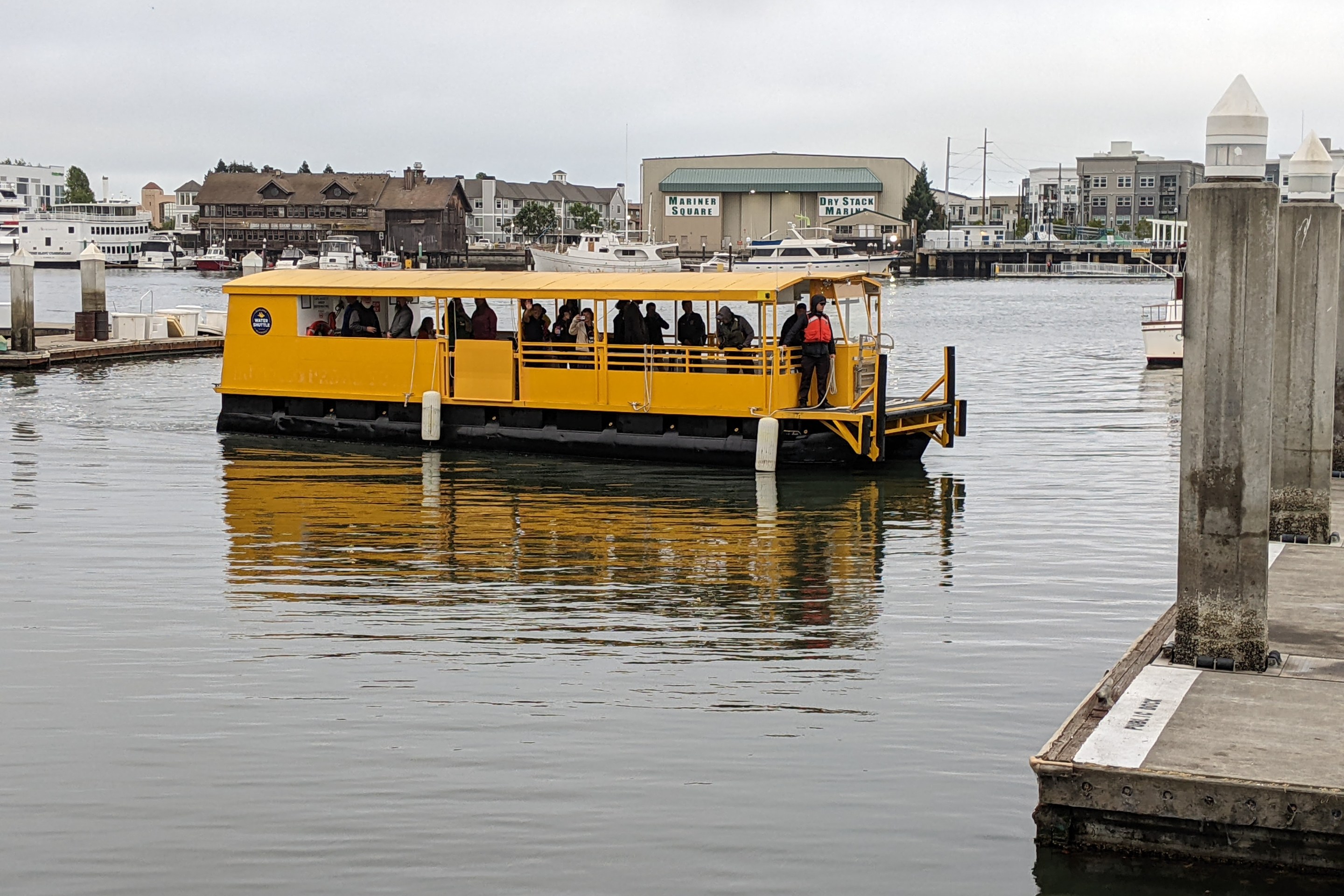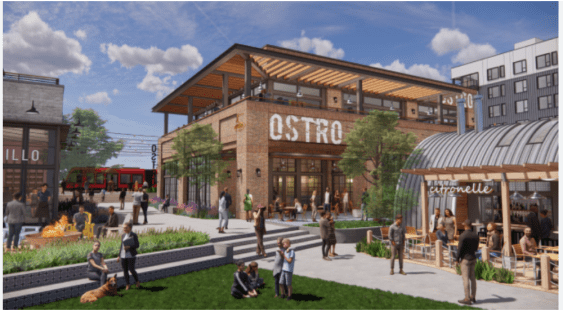 A rendering of the 1900 unit Trinity Plaza development at Market and 8th Street
A rendering of the 1900 unit Trinity Plaza development at Market and 8th StreetAs we reported last week, several city agencies have begun to look at ways to improve Market Street when it is repaved, including an inter-agency process spearheaded by DPW and the Planning Department. Yet, we've still heard nothing from Mayor Gavin Newsom that suggests he'll make the transformation of San Francisco's most significant street an urgent priority.
Given the political capital he's willing to spend on six car-free Sundays this summer, which we applaud wholeheartedly, we don't understand why he wouldn't marshal all the Market Street principals together, especially when his allies are calling for change and his political nemeses are rallying their troops to do it in spite of him.
Streetsblog San Francisco obtained a copy of a letter sent to Mayor Newsom several weeks ago by a group of signatories that don't always see eye to eye on street issues (PDF). In the letter they urged the Mayor to bump Market Street to the top of his list of priorities for this year.
"Unfortunately today Market Street does not live up to its potential as a landmark boulevard. Transit performance, vehicle traffic congestion, pedestrian and bicycle accessibility and safety, and economic vitality all are in a poor state along much of the Market Street corridor."
While it's little surprise that advocates like SFBC, Livable City, and Walk SF would want the Mayor to act, we were heartened to read that the Chamber of Commerce, San Francisco Convention and Visitors Bureau, the Central Market CBD, the North of Market/Tenderloin CBD, and the Market Street Association were all on board.
Though the letter is clearly more middle of the road than one coming exclusively from the advocates, it does list a number of targets:
- Decrease transit travel time and improve transit reliability
- Improve pedestrian circulation and safety
- Create a safer, more inviting bicycle route
- Accommodate necessary motor vehicle trips
Market Street Association Executive Director Carolyn Diamond said in an interview that she has heard less resistance to change from merchants over the last couple years. She did insist that merchants are opposed to a total ban of cars on market street, but they are more and more amenable to time-of-day restrictions.
Diamond and other parties involved in the tumultuous battle over the Mid-Market Redevelopment Area Plan still feel the sting of a ten-year planning process that ended up shelved at the Board of Supervisors after vociferous protests from affordable housing and transit advocates, and the crucial resistance from Supervisor Chris Daly.
Despite the the current economic situation, the death of the the redevelopment area proposal and the attached special use district approved by the Planning Department, a great deal of development in the Mid-Market area has been approved over the next five years; some of it is already being built. A quick tabulation from Planning Department documents shows that at least 3,000 residential units have been approved for the next 4-5 years, the largest of which is the Trinity Plaza development, with 1900 rental units.
In a precedent-setting deal brokered by Supervisor Daly and the developer, and with the Mayor's support, the developer of Trinity Plaza, Angelo Sangiacomo, agreed to make 360 units of the new development rent-stabilized, relocate the current occupants of Trinity Plaza Apartments during construction, and rent to them at current levels when they move back in. The development will have multiple ground level uses, including a market, and most expect it to have a dramatic effect on that section of Market Street.
SFBC's Program Director Andy Thornley agreed that economic development is crucial for making the street a success for pedestrians and cyclists.
Mid-market revitalization is the main premise of Market right now. SFBC knows that the point is not to make this car free and then see what happens. What’s more important is to have a street that’s vital, interesting, safe, active. A re-imagined Market works well for transit, bikes, peds and for the merchants who are there and the merchants who aren’t there yet. We keep turning to the Mayor and saying here’s a great project that needs a leader.
A source in the Mayor's office who insisted on anonymity said that incremental steps could work on Market Street:
Market should be improved and emphasis should be non-automobile trips, service vehicles, but I don’t think we are in any position to remove automobiles currently. It’s premature until we’ve reached a critical residential threshold, more uses like restaurants, lounges, bars, nightclubs, that cater to evening users. Some people have this idea that we can have a pedestrian paradise overnight, but you could end up with potentially desolate street life if you don’t allow automobile access.
There’s no reason that Market Street couldn’t be incrementally converted, with the gradual elimination of private automobile trips. One can imagine in the long run that it could be transitioned solely to transit, pedestrians and bicycles. The key is a gradual transition.
Supervisor Daly isn't waiting around for Newsom to take a leadership role. Explaining why he chose to direct the SFCTA to study a car-free Market Street late last year, he said: "Given the progress we’ve made collectively on issues like climate
change, CO2, rethinking our public spaces, I thought it may be perfect
to give it one last try before leaving office. Gavin had done his Sunday Streets thing. I had the position that I wanted to see Market Street opened up to additional uses other than cars since before taking office."
When asked whether he believed Market Street could be transformed without Mayor Newsom's strong leadership, he said he wouldn't have brought it up if he didn't expect to bring change before he leaves office.
"I’ve done plenty of major initiatives without strong mayoral leadership, it’s actually a specialty of mine. I don’t know if there are many other electeds who could move a major initiative without the support of the mayor, but I’ve been proven to do it."




